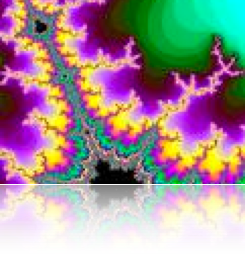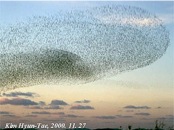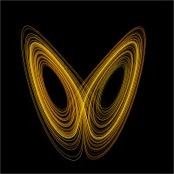Chaos Theory
Action, Structure and Chaos
lundi 10 mars 1997
[Refereed Article] Organization Studies, 1997, vol. 18, n° 1, pp. 119-143, with Raymond-Alain Thietart.
We believe that organizational actors, through their actions, create their own context. Once enacted, the context tends to develop a dynamic of its own, which escapes the control of the organization. As a consequence, it shapes the future of the organization. To illustrate our point, we study a crisis that we believe is a case in point of a non-desirable situation which might in fact be

La dialectique de l'ordre et du chaos dans les organisations
lundi 23 octobre 1995
[Invited Paper] La dialectique de l'ordre et du chaos dans les organisations, Les Cahiers du Management, 1995, n° 4-5, Institut du Management d'EDF-GDF, pp. 158-168, avec Raymond-Alain Thiétart.
De nombreux auteurs ont déjà mis l’accent sur la dialectique continue de convergence et de divergence, de stabilité et d’instabilité, d’évolution et de révolution auquel les organisations sont soumises. L’objet de cet article est de montrer en quoi ce processus dialectique est inhérent à la structure

Dynamique non-linéaire dans les organisations : implications pour le management
lundi 22 mai 1995
[Refereed Conference Proceedings] Conférence “L'entreprise apprenante et les sciences de la complexité”, Aix-en-Provence : Université d'Aix-Marseille III, avec Raymond-Alain Thiétart.
L'interdépendance dynamique entre acteurs et actions caractérise la plupart des organisations. Des acteurs multiples avec des agendas et des cadres de référence divers, à l'intérieur et à l'extérieur de l'organisation, essaient de coordonner leurs actions, échangent de l'information, interagissent et ce de

Between Voluntarism and Determinism: Chaos!
mercredi 10 mai 1995
[Refereed Conference Proceedings] in Hamid Bouchikhi, Martin Kilduff, and Richard Whittington (eds.), 1995, Action, Structure, and Organizations, Coventry: Warwick Business School Research Bureau, 214-235, avec Raymond-Alain Thietart.
Chaos might be the case in point of an extreme situation in which a succession of small and deliberate actions leads to a state of apparent randomness which seems impossible to control. In this situation, neither voluntarism nor determinism can help to explain

Chaos Theory and Organization
lundi 6 mars 1995
[Refereed Article] Organization Science, 1995, vol. 6, n° 1, pp. 19-31, with Raymond-Alain Thietart.
Many authors have stressed the existence of continuous processes of convergence and divergence, stability and instability, evolution and revolution in every organization. This article argues that these processes are embedded in organizational characteristics and in the way organizations are managed. Organizations are presented as non linear dynamic systems subject to forces of stability and

La dialectique de l’ordre et du chaos dans les organisations
lundi 15 mars 1993
[Refereed Article] Revue Française de Gestion, 1993, n° 93, pp. 5-15, avec Raymond-Alain Thiétart.
Déjà à l’origine de nombreuses recherches dans le domaine des sciences mathématiques et physiques, la théorie du chaos, qui sert de toile de fond à cet article, n’avait guère inspiré de travaux jusqu’ici au sein des sciences sociales. Les auteurs entendent montrer, à l’aide de cette théorie, en quoi le processus dialectique entre convergence et divergence, stabilité et instabilité, évolution et


I've spent lots of time and efforts working with Raymond Thietart on the application of complexity and chaos theories to management.
Among the papers we've written together on the topic, my two favorites are a theoretical piece (Org. Science, 1995) and an empirical one (Org. Studies, 1997). The starting point for the Org. Science piece is that organizations are non linear dynamic systems subject to forces of stability and forces of instability which push them toward chaos. Drawing from chaos theory, we derived some propositions. The Org. Studies piece is a follow up with the empirical part testing these propositions. Using data from my doctoral dissertation (which has nothing to do with chaos), we ran mathematical models to check whether chaos was present. After countless hours in front of several Unix machines running simultaneously, we ended up with something nice!
I no longer do research in chaos theory or complexity.








